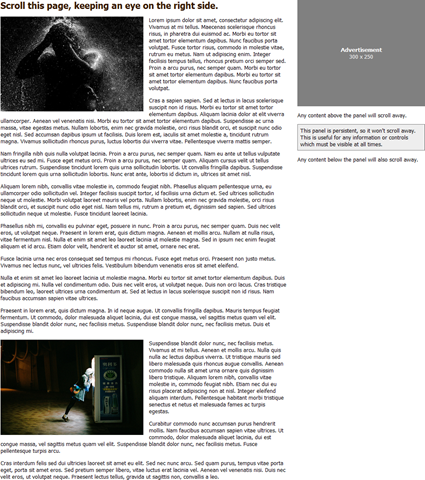UI Controls of the Week: Quickly fill up a UI mockup with photos, placeholder text, and ads
When you’re designing a new UI, you often need to experiment with a variety of UI layouts in advance of having content that’s representative of what your UI will eventually display. This is a good thing — you don’t want to be burdened with the task of creating meaningful content when you’re focused on layout and navigation flow. In the exploratory stages of design work, it’s also important for you, or your design’s reviewers, to not get caught up too much in the generation of sample content.
This is why designers have long used Lorem Ipsum placeholder text to fill up a design. It looks like real text (which would not be the case if you simply mashed the keyboard), and you can generate an infinite amount of it to fill up any design you’re working on. Most designers also have a collection of placeholder images or advertisements they can use to fill up a design mockup. One service will dynamically serve up placeholder photos of kittens, although I’d imagine the conspicuous presence of zillions of kittens will be highly distracting for most web site designs.
Although end users never see these sorts of placeholders, they’re nevertheless an essential element in the software development process. I’ve yet to see placeholder components included in a UI library, but it seems eminently reasonable for these placeholders to be packaged up as reusable controls. Anything that cuts down on design time is money in your company’s pocket.
With that in mind, the QuickUI library now has several placeholder controls:
LoremIpsum
The LoremIpsum control generates an arbitrary number of paragraphs of Lorem Ipsum text. You can control number the number of sentences per paragraph. By default, the first sentence of the first LoremIpsum control starts with “Lorem ipsum dolor sit amet…”, but you can control that as well.
FlickrInterestingPhoto
The FlickrInterestingPhoto control grabs a photo from Flickr’s Interestingness collection for the previous day. You can pick one of Flickr’s standard image sizes, or you can use CSS to scale the photo to an arbitrary size.
I use Flickr for this control because it’s free, has a good API, has high-quality images, and the images will change each day. It’d be pretty straightforward to adapt the control to another photo service.
AdPlaceholder
Finally, the AdPlaceholder control creates a rectangle the size of any IAB standard ad unit, or you can specify an arbitrary size.
I’ve looked for a server that would serve up meaningful ad images, but haven’t found one. Some sites will give you a small set of ad placeholders, but they’re too boring to be convincing, and the small size of the sample set means you get too much repetition. An ad placeholder service would be quite useful. It would give advertisers free exposure, although the ad server would need to be rigged to not count such impressions as meaningful. All this means that it’s hard to provide a general-purpose ad placeholder control. It would be quite easy, on the other hand, to create an ad placeholder control that worked against a specific ad server and ad account.
Using placeholders like these let you quickly fill up a mockup. E.g., the demo for the PersistentPanel control uses all three types to block out a fairly interesting layout on the fly:

In practice, I’ve discovered that these dynamic placeholder controls deliver a substantial benefit over relying on static content: the random content forces me to cope with layout situations I might not expect or encounter until far later in the development process. Designers have a innate tendency towards perfection, and invariably pick sample content to make a layout look as appealing as possible. For example, a design for a window will typically show a set of content that perfectly fills the window, but as I noted long ago, such a design is probably too good to be true. Your team will end up evaluating a design according to a degree of theoretical perfection that will never be seen in production. By building mockups around dynamic content, you force yourself to recognize and adapt to a more meaningful range of text run lengths, picture aspect ratios, and so on.